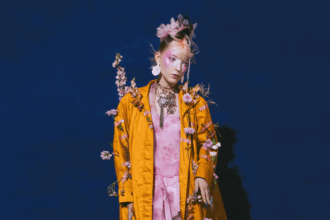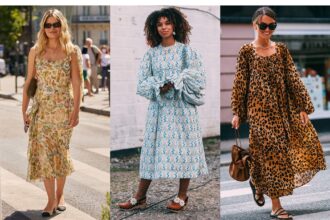Introduction
Have you ever considered how your outfit impacts not just your image, but also your mood and performance? The clothes we wear do more than simply cover our bodies; they shape our thoughts, influence our behaviors, and can even open doors to new opportunities. From the boardroom to a casual coffee chat, the psychology behind fashion is profound. Dressing for success goes beyond aesthetics—it taps into psychological factors influencing fashion that can elevate or hinder our personal and professional journeys. Join us as we explore how what you wear could be the key to unlocking confidence and achieving success in every aspect of life.
The Impact of Clothing on Our Thoughts and Behaviors
Clothing does more than just cover the body; it shapes our mental landscape. The fabric we wear can influence how we think, feel, and act. Studies show that donning formal attire can elevate cognitive functions, making us sharper and more focused.
This phenomenon stems from “enclothed cognition,” where our clothing choices affect our psychological state. A tailored suit might inspire confidence, while casual wear may lead to a laid-back mindset.
Our thoughts often mirror what we choose to wear. Bright colors can uplift mood and promote creativity, whereas darker shades tend to evoke seriousness or introspection.
Even peer perception plays a role in this dynamic. When dressed well, people often report feeling more assertive and engaged in social situations. This interplay between fashion and psychology reveals profound implications for everyday life.
Dressing for Success: How Clothing Can Affect Our Career Advancement
Clothing plays a crucial role in how we present ourselves in the workplace. The right outfit can establish authority and competence instantly. When you dress well, you signal to others that you take your role seriously.
Research shows that people often judge capabilities based on appearance. A polished look can lead to more positive interactions with colleagues and superiors alike. It influences not just first impressions but ongoing perceptions of professionalism.
Moreover, dressing for success impacts your own mindset. Wearing attire that makes you feel confident boosts self-esteem and promotes productivity throughout the day.
In competitive industries, such as business or law, adhering to professional dress codes may be essential for advancement. Aligning your wardrobe with industry standards enhances credibility while allowing your skills to shine through without distraction.
The Role of Confidence in Clothing Choices
Confidence plays a crucial role in our clothing choices. When we feel good about what we’re wearing, it shows. This boost in self-esteem can influence how others perceive us.
Choosing outfits that resonate with our identity can enhance our mood and alter our demeanor. For instance, slipping into a well-fitted blazer might channel an air of authority, while casual wear could spark creativity and comfort.
Conversely, doubts may lead to conservative choices or even avoidance of certain styles. We often shy away from vibrant colors or bold designs due to fear of judgment.
The psychology behind fashion suggests that when we dress with intention, confidence naturally follows. It’s not just about fabric; it’s about the statement we make to ourselves and the world around us. Embracing personal style without hesitation fosters assurance in every setting—from boardrooms to social gatherings.
Dressing for Different Occasions: Work, Interviews, Special Events
Choosing the right outfit for different occasions can significantly impact your success. At work, a polished look fosters professionalism and respect. Opt for tailored pieces that reflect your industry’s standards while allowing personal flair.
Interviews present unique challenges. Your attire should convey confidence and competence. Research the company culture beforehand; a suit may be perfect for corporate roles, whereas startups may embrace more casual styles.
Special events offer a chance to express individuality. Whether it’s a wedding or gala, selecting garments that fit the occasion is crucial. Vibrant colors and elegant accessories can elevate your presence without overshadowing you.
Understanding each setting helps you navigate fashion choices effectively. Dressing thoughtfully not only showcases who you are but also aligns with expectations, giving you an edge in various social landscapes.
The Influence of Society and Culture on Fashion Choices
Fashion is a mirror reflecting our society and culture. Trends often emerge from social movements, art, and popular media. When we see celebrities or influencers donning specific styles, it shapes our choices.
Cultural backgrounds play a significant role too. Traditional garments tell stories of heritage while contemporary fashion can challenge norms. In many cultures, clothing represents values and beliefs that resonate deeply with individuals.
Moreover, societal expectations create pressure to conform. Brands capitalize on this by marketing outfits that align with prevailing ideals of beauty or success. This constant evolution influences how we perceive ourselves in relation to others.
Social media amplifies these factors further. Platforms like Instagram showcase diverse styles but also set unrealistic standards for appearance and lifestyle. The psychological impact is profound as people seek validation through their attire.
The interplay between society, culture, and personal expression creates a dynamic landscape where fashion becomes more than just fabric—it becomes identity.
Finding the Balance Between Personal Style and Professional Success
Finding the balance between personal style and professional success can be a tricky endeavor. On one hand, expressing oneself through fashion is an important aspect of individuality. On the other, aligning with professional standards often carries significant weight in our careers.
It’s essential to recognize that while trends come and go, authenticity remains timeless. Strive to incorporate elements of your personal style into your work wardrobe without sacrificing professionalism. This might mean choosing unique accessories or opting for colors that resonate with you, all while keeping within industry norms.
The key lies in understanding the environment you’re working in. Different industries have varied expectations regarding attire; tech startups may embrace casual wear while corporate settings typically favor formal dress codes. By blending elements from both worlds, you can create a look that’s distinctly yours but still appropriate for the context.
Listening to feedback is also crucial as it helps refine your sense of what works best for you professionally and personally. Remember that fashion is ever-evolving just like our careers — adaptability plays a role here too.
Dressing successfully means finding comfort in being yourself while balancing external perceptions and expectations related to clothing choices. As long as you’re mindful about how your attire impacts those around you — whether by boosting confidence or enhancing credibility — you’ll navigate this complex landscape effectively.










